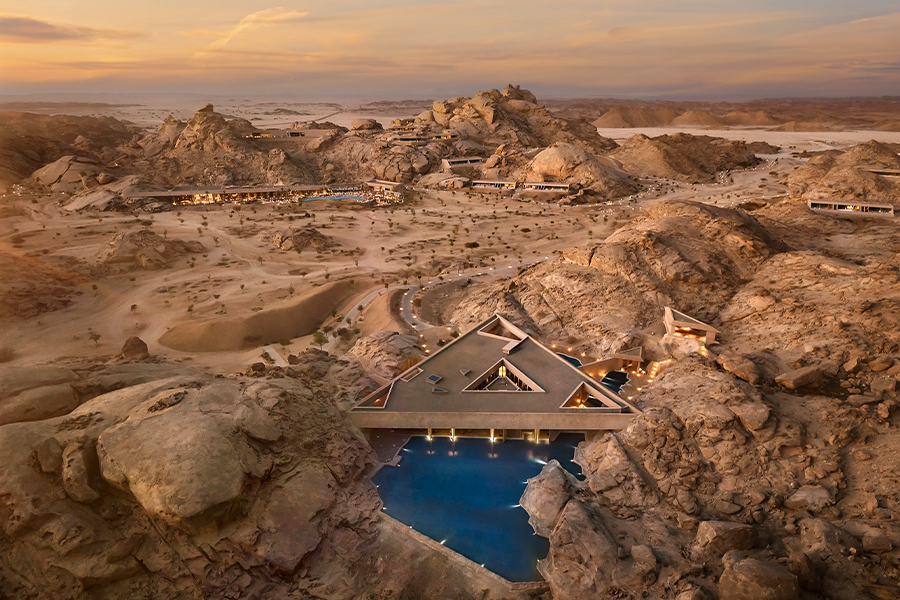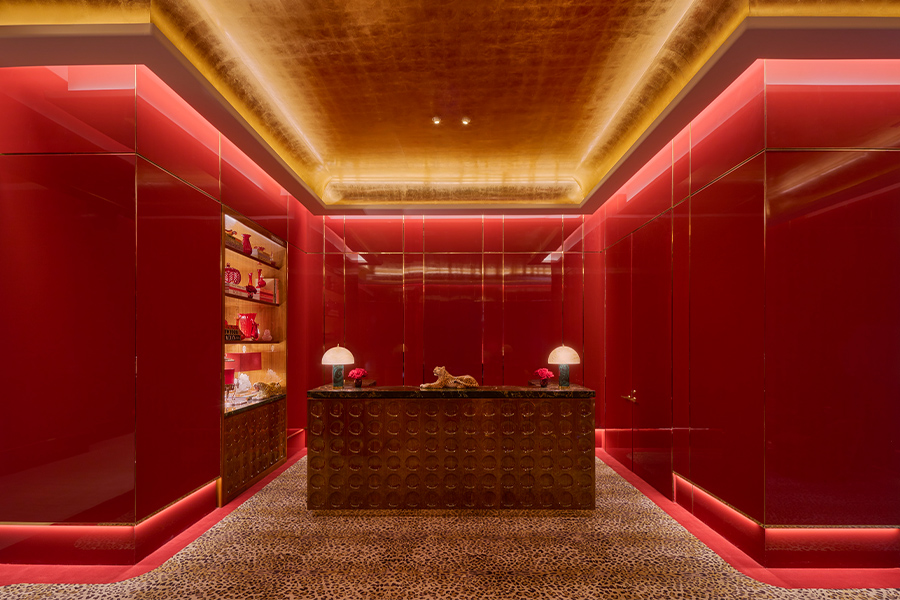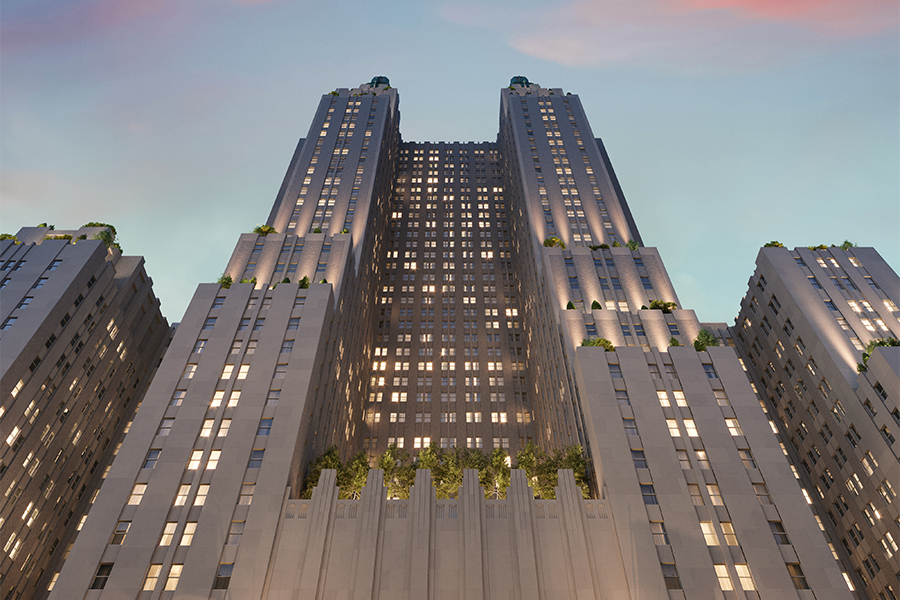Around seven years ago, Chad Oppenheim, founding principal of Miami-based Oppenheim Architecture, was invited to Saudi Arabia to tour a remote, unspoiled desert landscape.
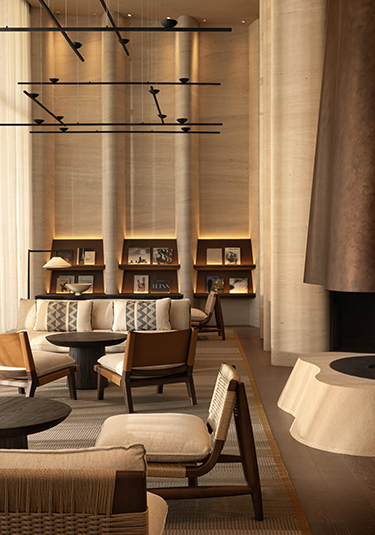
Noble materials anchor oak wood shelving and smoked oak flooring in the lobby
Red Sea Global, then known as the Red Sea Development Company, was in the throes of planning its ambitious regenerative tourism project on the kingdom’s west coast, and Saudi crown prince Mohammed bin Salman was eager for the forthcoming hotel-packed destination to include a bold, ecologically conscious property in the Hejaz Mountains that paid homage to the rugged terrain.
During this exploratory design phase, Oppenheim was one of several architects asked to weigh in on the possibilities. “They brought us to the desert, and they asked, ‘Where do you think we could build something that would be spectacular?’” recalls Oppenheim. “Normally you have a site, and you get a brief, but this was certainly a more exciting, more open-ended approach. It was an expansive area, and we searched the desert for days, looking at different places. Then we came upon a huge rock, a massif, and I said, ‘That’s our resort. Let’s inhabit that rock.’ It had all these nooks and crannies and dimples, this welcoming geology, and in my mind, it was about building with the land rather than on it.”
The Crown Prince was swayed by Oppenheim’s vision, and so the architecture firm and the Red Sea Global team plunged ahead with the sensitive construction. Desert Rock is the fifth hotel owned and operated by Red Sea Global—which also includes Thuwal Private Retreat and the wellness-driven Amaala, currently readying itself for the unveiling of phase one—and part of the Saudi government’s Vision 2030 program to establish a prosperous economy that transcends fossil fuels.
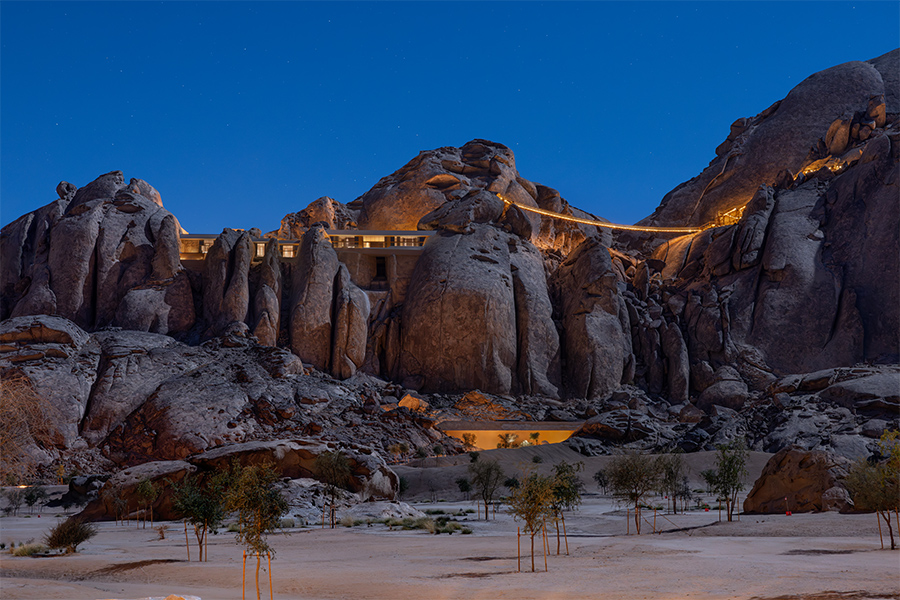
At the resort, accommodations are found both low in the valley and high up the mountain
For Desert Rock, which was brought to life with the help of hundreds of engineers, geologists, and mining experts, the architecture is downright otherworldly and has “never been seen before in its current incarnation,” Oppenheim says. Yet, throughout the design process, he consistently looked to the past.
Petra’s wondrous tombs and temples, carved into the pink sandstone cliffs of southwest Jordan by the Nabataeans in the 3rd century B.C., was an inspiration. AlUla was another. Residents of the ancient walled city in Saudi Arabia’s Medina province abandoned their mud brick homes in the 1980s, but it is now enjoying a revival through the lenses of culture, wellbeing, and recreation.
Minimizing inevitable disturbances to the environment was the cornerstone of the project. For example, excavated materials unleashed during construction were reworked into the resort, anchoring visitors in the location as they enter the 64-key hotel by way of a concealed valley.
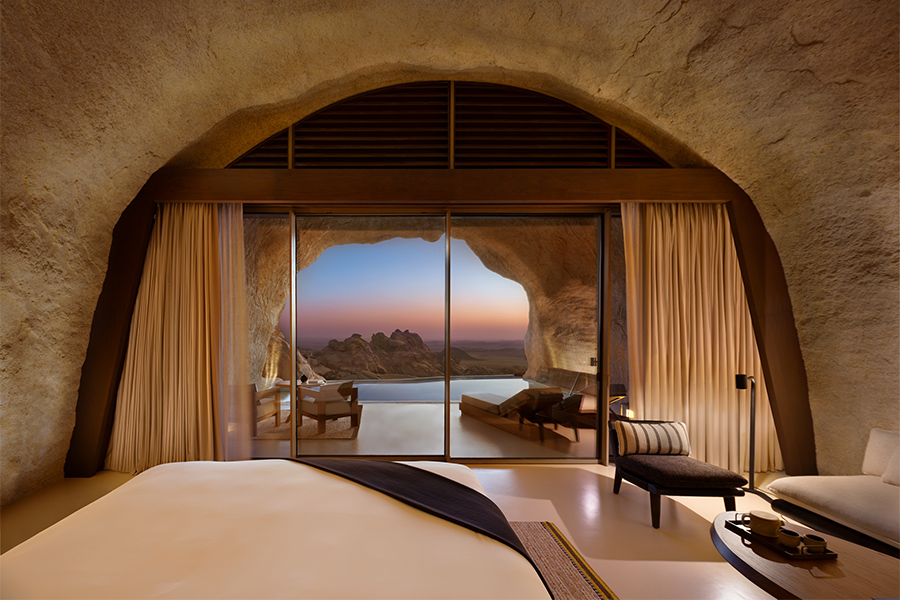
The one-bedroom Mountain Cave suites star cliffside plunge pools
Further reflecting Oppenheim’s mindset of building with what was already there, an abundance of native plants is woven into the design acting as both a passive cooling system while also preserving the native habitats. “Working around the world, I’ve never come across a place where replenishing the ecosystem is such a priority. The goal was to make it healthier,” he adds.
Complete with capacious living spaces and private pools, some of which appear to float through the air, the various guestroom types engage with the site in different ways. Wadi villas blur into the dramatic valley, elevated Cliff Hanging villas beckon from the side of the massif, Mountain Crevice villas are perched above rock pinnacles, and Mountain Cave suites are nestled directly into the mountain. There is no shortage of privacy at the property either. Given its secluded locale, the three-bedroom Royal Villa takes discretion to new heights.
Equally respectful of the land is the pared-back design, courtesy of Studio Paolo Ferrari (the Toronto practice tackled the guestrooms at Red Sea’s Shebara Resort, too, which also bears the imprint of Rockwell Group and Killa Design). Consider the views amplified from glass-walled restaurant Nyra or Wadi, the loungey poolside sanctuary. The spa, located at the foot of the mountain, also encourages contemplation in its private hammam and rhassoul chamber.
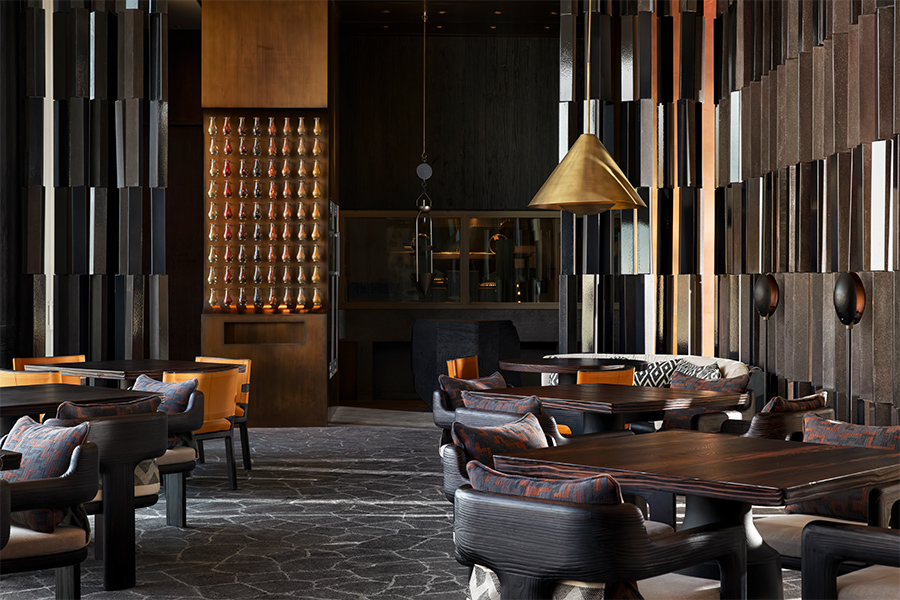
Signature restaurant Nyra evokes a dark, moody vibe thanks to volcanic rock on the floor and a screen that wraps the walls in a stacked pattern
According to founder Paolo Ferrari, the design journey that unfurls for guests at Desert Rock revolves around the dual notions of strength and barefoot luxury. “This is a project about cocooning, meditation, and reconnecting with the earth,” he says. “It was about pursuing a design that was understated and did not overwhelm. It’s a special site, almost spiritual, and for us, it was about honoring that.”
That philosophy led to a simple, natural, and reverent palette. Concrete flooring flows between indoors and out, plaster covers ceilings and walls to strengthen the relationship between the architecture and interiors, and limestone and bronze were also embraced in key areas. These elements convey “a quality of minerality,” adds Ferrari, propelling guests back to the land. Where possible, the studio opted for sand casting “to evoke, in a subtle manner, a sense of place.”
Such cultural influences, interpreted in a sophisticated fashion, are part of Studio Paolo Ferrari’s overarching concept of quiet monumentality, exemplified in standouts like the guestrooms’ cast concrete headboards and rough-cut and sculpted stone. Another restrained touch is the incense holder greeting guests at arrival. “This was an important point of ritual,” says Ferrari, for the scent is a link to the flora flourishing across the grounds.
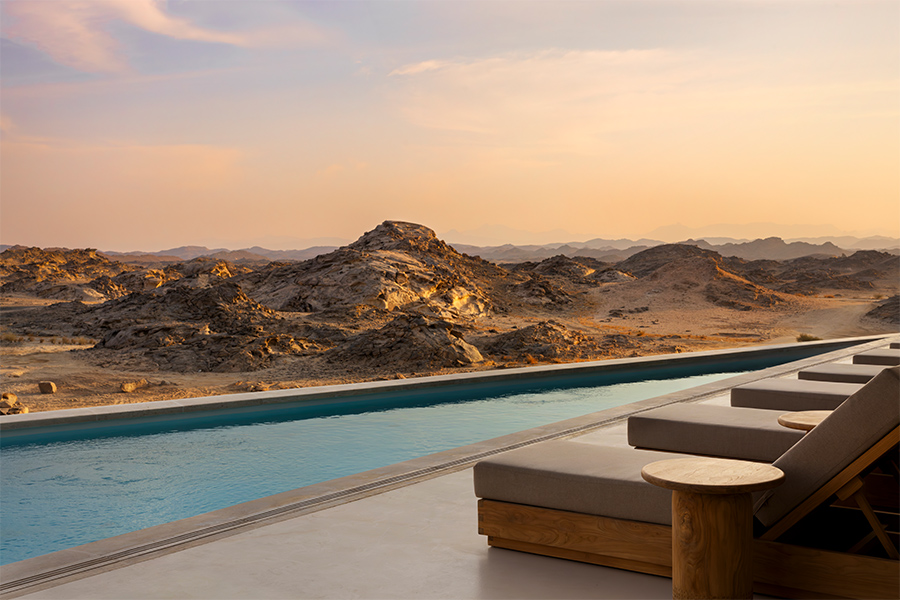
Loungers line one of Desert Rock’s pools, which overlooks the rocky terrain
Along with some 200 bespoke pieces of furniture and lighting, Studio Paolo Ferrari designed a poetic collection of bone-like hardware, “weathered by sand, expressing an ancient timelessness,” Ferrari says.
This blend of the elemental and thoughtful is ideal for Desert Rock, for it allows the panorama of amorphous rock to take center stage. Oppenheim says he could have suggested another architectural solution; a black or white structure, he notes, might have been a memorable juxtaposition to the vast amounts of red rock. But ultimately, he wanted to impose restrictions, for the rock formations’ surreal vistas to become the resort’s very purpose.
“It’s about bringing you into the present. We want the architecture to ground people, to make them feel in the moment and viscerally connect to the site,” Oppenheim says, “to watch the stars, to see the sun, to find the joy in these things that we’ve somehow forgotten. There’s a magic there.”
This article originally appeared in HD’s April 2025 issue.

